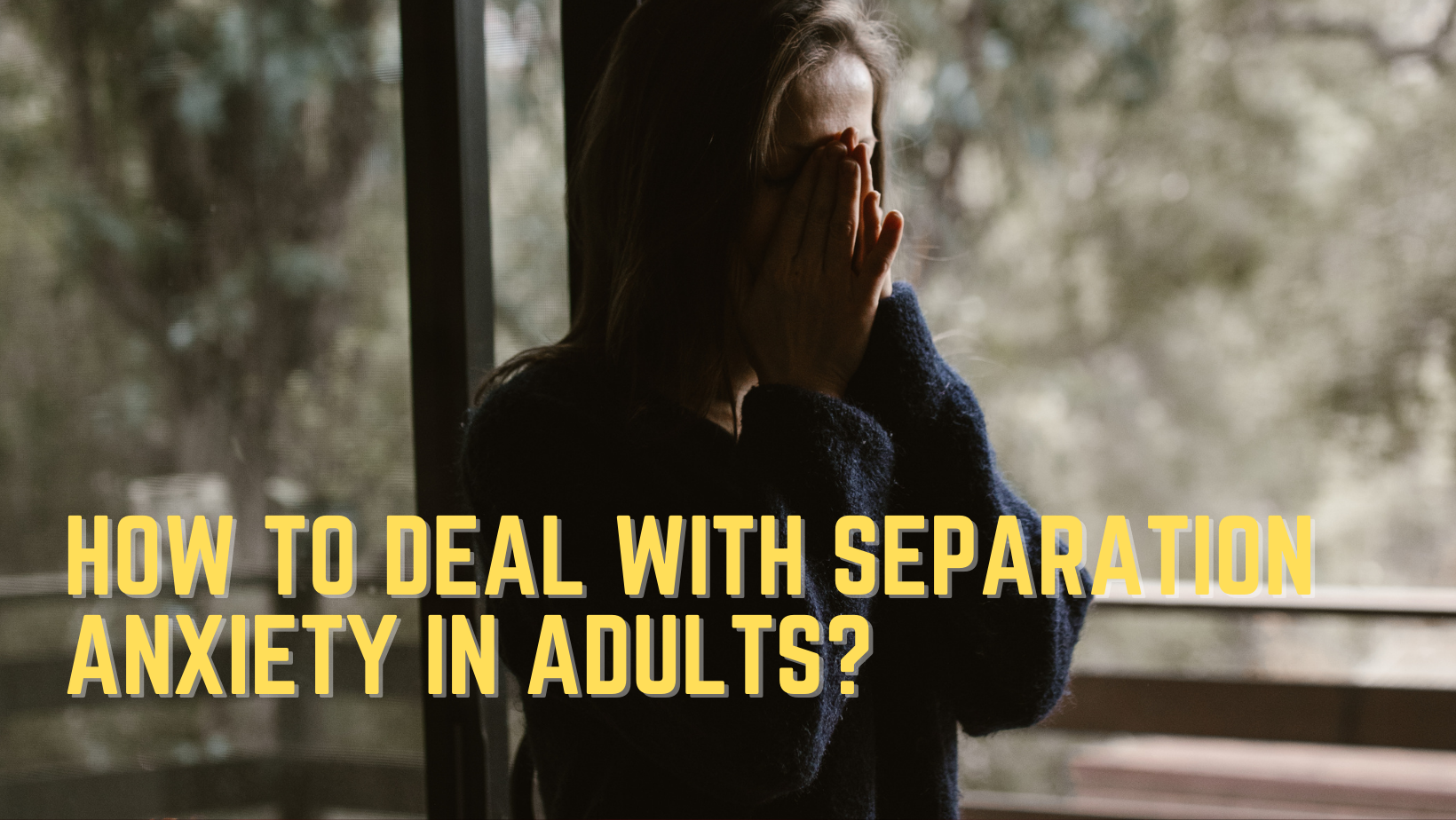Today, we’re tackling a topic that many might think only applies to children. Remember the kid who clung to his mom’s leg on the first day of school? He’s grown up now, but that anxiety might still lurk beneath the surface. Separation anxiety in adults isn’t just about missing your college roommate or feeling nostalgic about childhood. It’s an intense, persistent fear or discomfort when anticipating or experiencing separation from a person or place that offers security. But don’t fret – you’re not alone in this, and there are ways to manage and overcome it. Let’s dive deep into understanding how to deal with separation anxiety in adults.
1. Recognize and Accept
The first step to dealing with separation anxiety symptoms in adults is acknowledgment. Understand that it’s a real issue, not something to brush under the rug. It’s perfectly okay to have these feelings, but recognizing them is crucial for the journey ahead.
2. Talk it Out
Communication is therapeutic. Speak to someone you trust – a friend, family member, or professional therapist. Expressing your feelings can offer clarity and reduce the burden.
3. Gradual Exposure
Instead of diving headfirst into situations that might trigger your anxiety, try a more phased approach. If being away from a loved one causes distress, start with short durations and gradually increase the time. This can help acclimatize your mind to separations.
4. Establish a Routine
Humans find comfort in predictability. Having a set routine can provide a sense of security, especially during moments of separation.
5. Distract and Redirect
When feelings of anxiety start to creep in, engage in an activity you love. Be it reading, painting, or even gardening – diverting your mind can minimize the intensity of your feelings.
6. Set Clear Boundaries
With technology at our fingertips, it’s tempting to constantly check on loved ones. However, this can amplify your separation anxiety symptoms in adults. Set designated check-in times to ensure you’re not always on edge.
7. Practice Mindfulness and Relaxation Techniques
Meditation, deep breathing exercises, and progressive muscle relaxation can help reduce the symptoms of anxiety. They promote self-awareness and a connection to the present moment.
8. Journal Your Feelings
Writing can be cathartic. Pen down your feelings, triggers, and improvements. Over time, this can offer insights into patterns and growth.
9. Seek Professional Help
There’s no shame in seeking help. Cognitive-behavioral therapy (CBT) is particularly effective for treating separation anxiety symptoms in adults. A therapist can offer coping strategies tailored to your needs.
10. Educate Yourself
Understanding the roots and triggers of your anxiety can be empowering. Knowledge is power, after all! The more you know, the better equipped you’ll be to handle it.
Separation anxiety in adults can be challenging, but with the right approach, it’s manageable. Remember, it’s all about finding what works for you personally. There’s no one-size-fits-all answer, but a combination of understanding, self-help, and professional guidance can pave the way to a more balanced life.
Frequently Asked Questions – FAQ’s
- How common is separation anxiety in adults?
While traditionally associated with children, separation anxiety in adults is more common than many might think. Adults can experience it due to a variety of reasons, including significant life changes or past traumatic experiences. - Is separation anxiety in adults linked to certain life events?
Yes, certain events like losing a loved one, moving to a new place, or undergoing significant life transitions can act as triggers. However, it’s worth noting that reactions vary from person to person, and not everyone will develop anxiety due to these events. - How does separation anxiety in adults differ from general anxiety or stress?
Separation anxiety is specifically linked to the fear of being separated from certain individuals or places. General anxiety might be more widespread, related to various aspects of one’s life, not exclusively tied to separation. - Can lifestyle changes minimize the impact of separation anxiety?
Absolutely! Implementing a structured routine, engaging in physical activity, practicing mindfulness, and maintaining a balanced diet can all contribute to managing anxiety levels. Personalized strategies, however, work best. - What role does technology play in exacerbating separation anxiety symptoms in adults?
Technology, especially smartphones, can become a double-edged sword. On one hand, they provide instant connectivity, but on the other, constant notifications and the compulsion to stay connected can amplify feelings of anxiety and dependence. - Are there specific therapies recommended for separation anxiety in adults?
Cognitive-behavioral therapy (CBT) is often highlighted for its effectiveness in treating separation anxiety. It addresses maladaptive patterns of thinking and introduces coping mechanisms. Nonetheless, the approach might vary based on individual needs.
If you found this piece insightful, or if you know someone it might help, please share. Because the more we talk about these issues, the more we break down barriers and build a world where everyone feels a little more understood.




